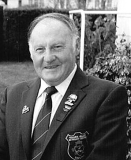Ohinemuri Regional History Journal 52, September 2008
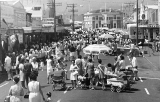
Paeroa's main street at the height of the 1971 Market Day.
Ohinemuri Regional History Journal 52, September 2008
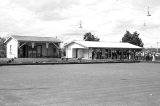
The official opening of the new Alley Memorial Park Pavilion, Hikutaia, in October 1969. The old pavilion (left) which was erected around 1924 and newly completed pavilion (right).
Ohinemuri Regional History Journal 52, September 2008
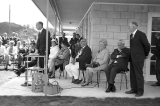
The official opening of the new Alley Memorial Park Pavilion, Hikutaia, in October 1969. Mal Morrison addressing the large crowd of bowlers, croquet and tennis players and residents.
Ohinemuri Regional History Journal 52, September 2008
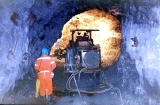
Bolter underground at Golden Cross
Special mining machinery working at the "gold face" in the Golden Cross Mine (story opposite page).
Golden Cross Gold Mine—1991-1998
Ohinemuri Regional History Journal 52, September 2008

A view of Centennial Park from Norwood Road.
Centennial Park: A Vision Fulfilled
Ohinemuri Regional History Journal 52, September 2008
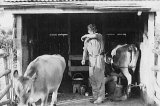
One of the early milking sheds. Note the milker sitting on a stool and the cow rear leg roped back.
Dairy Farming — 1908 to 2008
Ohinemuri Regional History Journal 52, September 2008

Waihi-Paeroa Gold Extraction Company's plant on the Ohinemuri River, 1910-1917. The remains of the plant can be seen from Mill Road.
Dredging Silt and Winning Gold
Ohinemuri Regional History Journal 52, September 2008
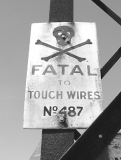
Fatal to touch wires
Electricity and how it came to Waihi
Ohinemuri Regional History Journal 52, September 2008

Ben Fairburn (left) and Rex Bramble check the honey in one of the vats.
Glimpse at Early Beekeeping
Ohinemuri Regional History Journal 52, September 2008

John Cotter is seen here doing what he did with pride: Showing visitors "his country", the Karangahake Gorge.
John Charles Cotter
Ohinemuri Regional History Journal 52, September 2008

Kauri logs from the Waitawheta Valley were taken by tramway to a railway siding at Owharoa, by train to Paeroa, then by tramway to the Junction Wharf. They are shown here being formed into rafts to be towed the Great Barrier Island where the Kauri Timber Company had its sawmill. c 1917.
Ohinemuri From Way Back
Ohinemuri Regional History Journal 52, September 2008

For a short period in the 1970s Paeroa residents and visitors could taste the famous Paeroa Mineral Water at a small kiosk on the Railway Reserve. The water was delivered by a popular farm well pump seen here being operated by a young boy. Sadly vandals continually wrecked the pump and it, with the structure, were removed and replaced by a quartz stone plinth.
Ohinemuri Regional History Journal 52, September 2008

A modern "herringbone" type milking shed which can milk up to 350- 400 cows in an hour.
Dairy Farming — 1908 to 2008
Ohinemuri Regional History Journal 52, September 2008
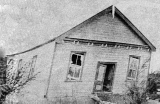
The Netherton Hall blown off its foundations during a storm in the March, 1910.
Netherton Hall Centenary
Ohinemuri Regional History Journal 52, September 2008

The Netherton Hall as it is today. The tennis courts, which were to the left of the hall, have now become a car park and a road metal dump.
Netherton Hall Centenary
Ohinemuri Regional History Journal 52, September 2008

Ngatea, c 1922, taken from the top of the old Orchard Bridge.
Inside Front Cover
Ohinemuri Regional History Journal 52, September 2008
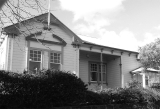
One of Paeroa's oldest buildings. The Courthouse, which was opened in March, 1896, and has been used by the Justice Department continuously since then, the only building to have one owner for 112 years.
Ohinemuri Regional History Journal 52, September 2008

One of Paeroa's oldest buildings, is the Paeroa Hotel, which was due to be opened in September, 1896, but was partially destroyed by fire, this delayed the opening until March, 1897. Originally built on the corner of Belmont Road and William Street, the hotel, in 1904, was cut in half moved and reassembled its present site opposite the then railway station. The only exterior change over the past 111 years has been the closing-in of the ground-floor verandah.
Ohinemuri Regional History Journal 52, September 2008
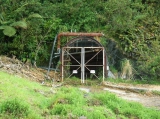
Today the mine is closed and the portal securely locked.
Golden Cross Gold Mine—1991-1998
Ohinemuri Regional History Journal 52, September 2008

Theras Broadley (left) and Shirley Williams (right) processing honey.
Glimpse at Early Beekeeping
Ohinemuri Regional History Journal 52, September 2008

One of the steel pylons which carried the electric power lines from Horahora to Waihi.
Electricity and how it came to Waihi
Ohinemuri Regional History Journal 52, September 2008

The refurbished car 317.
Railway Carriage No. 317
Ohinemuri Regional History Journal 52, September 2008

Our pylon is safely down and in the process of being loaded so it could go into temporary storage.
News from Waihi Arts Centre & Museum
Ohinemuri Regional History Journal 52, September 2008
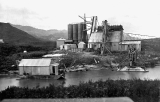
The Waihi Paeroa Gold Extraction plant on the banks of the Ohinemuri River, near the confluence of the Waitete Stream [the plant pictured pre-dates the purchase by the Waihi Paeroa Gold Extraction Company - E]. The tall, cylindrical tanks are those used for the cyanide treatment of finely crushed ore-bearing quartz, through which air was forced to keep the particles agitated until the cyanide had reacted sufficiently with the ore.
Dredging Silt and Winning Gold
Ohinemuri Regional History Journal 52, September 2008
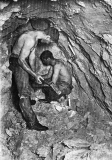
Waihi miners' some 1000 feet (300m) below the ground surface. Breaking out the quartz-loaded gold at the face of the drive. c 1900.
Ohinemuri Regional History Journal 52, September 2008
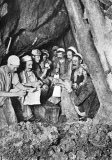
Waihi miners' some 1000 feet (300m) below the ground surface. Lunch-time. c 1900.


